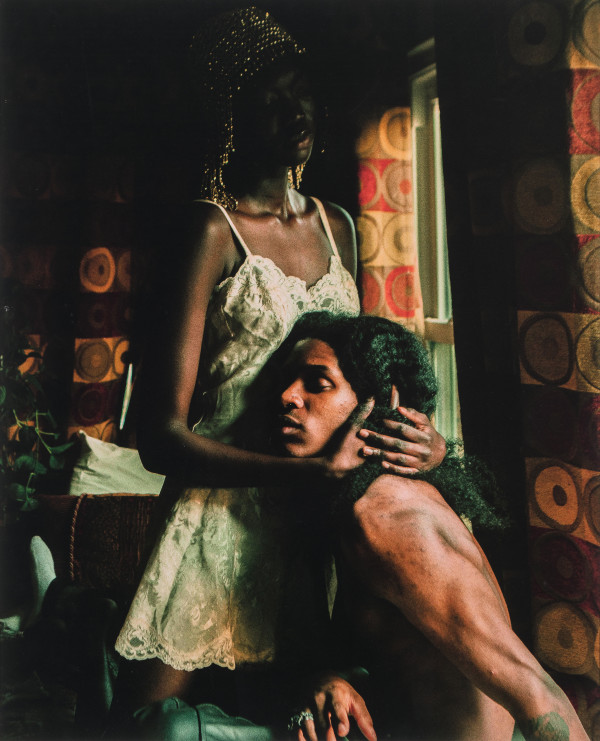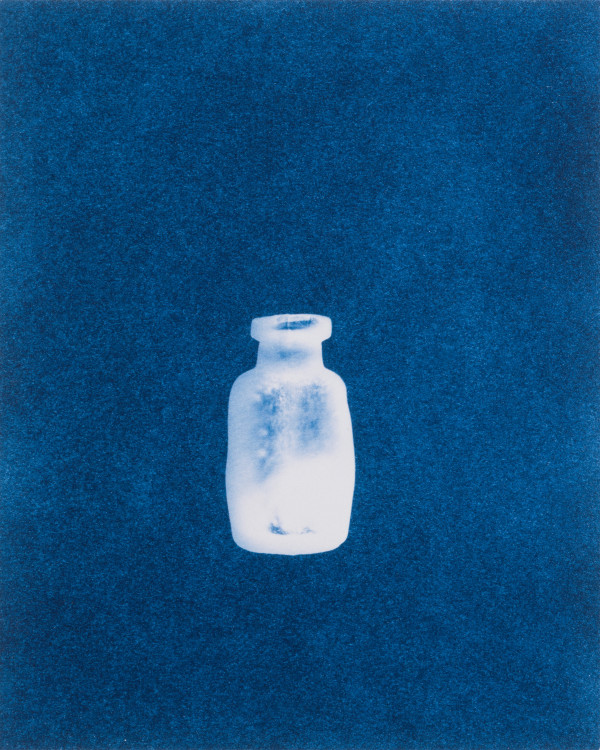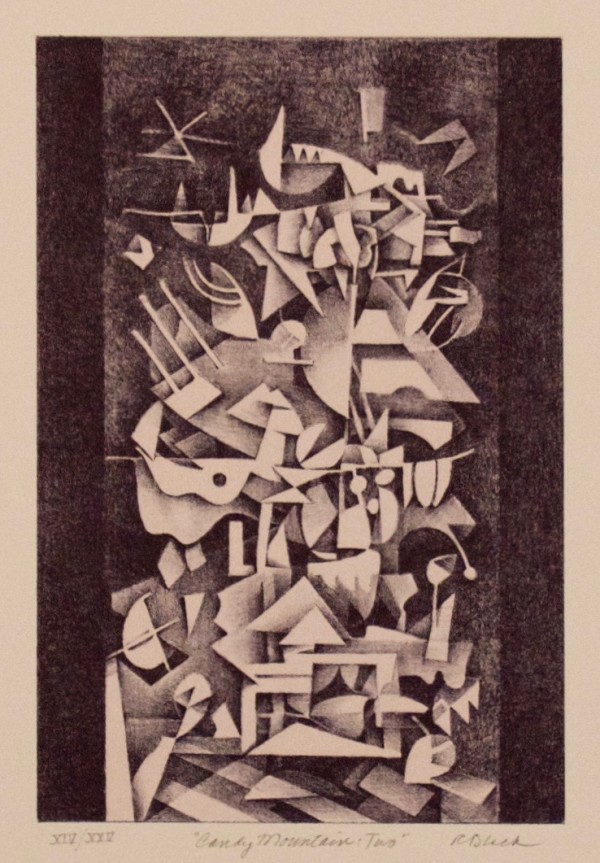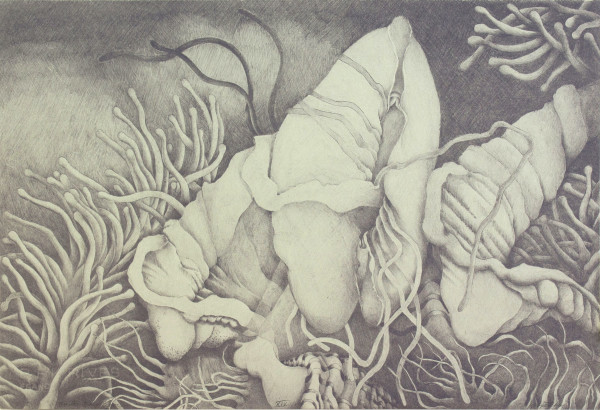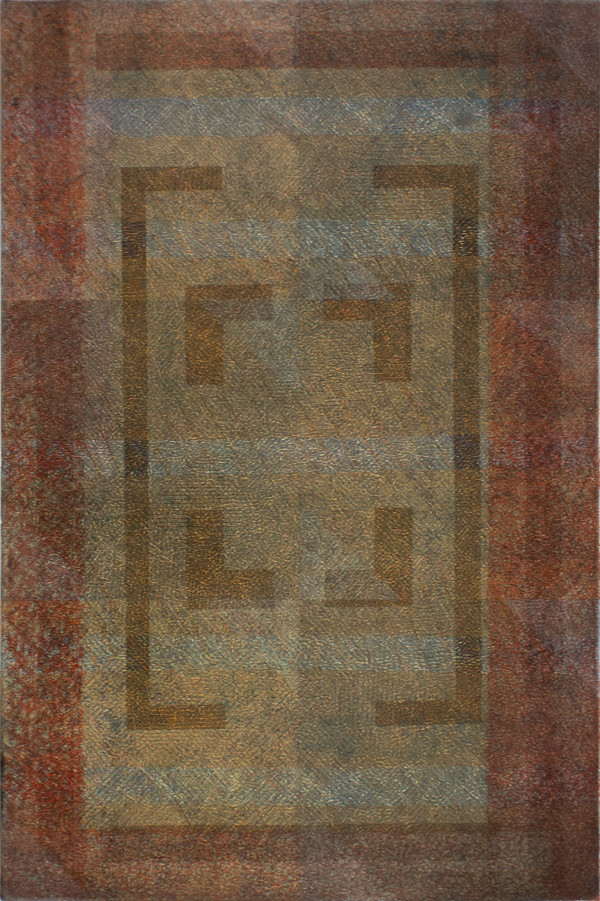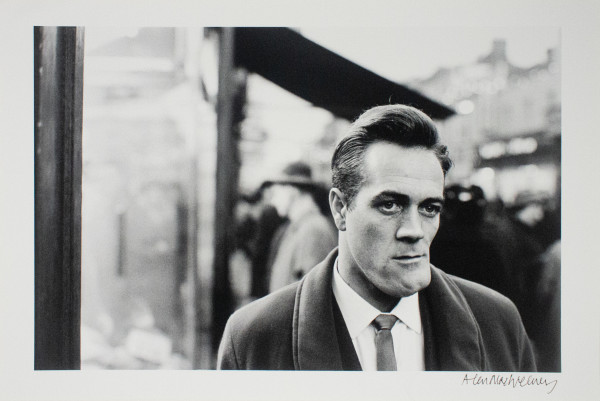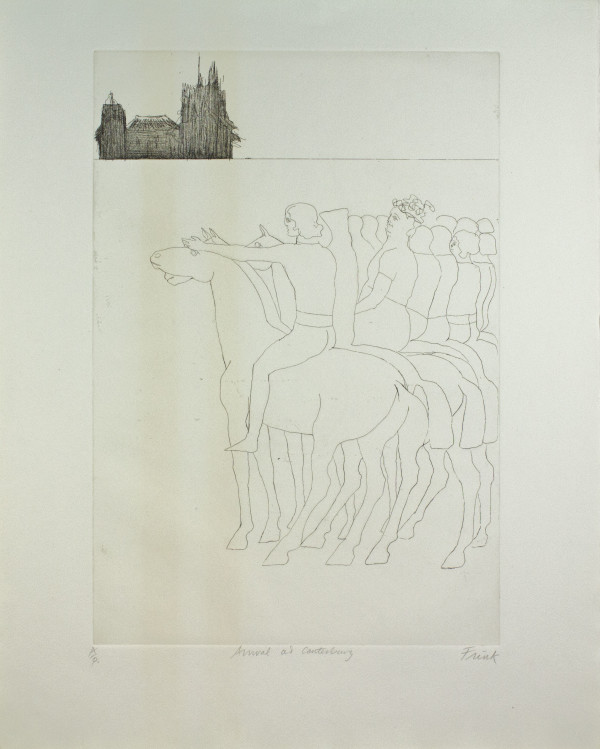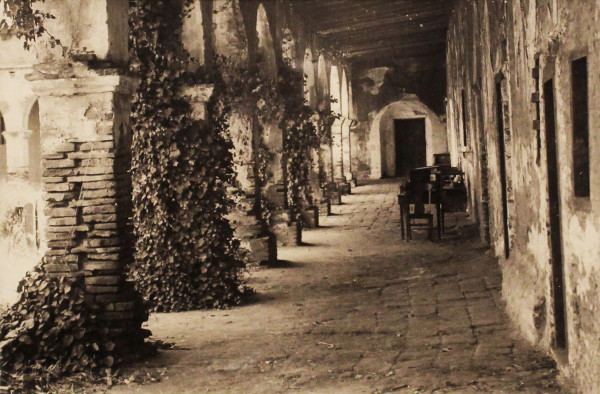Wind Sculpture (SG) I
- Steel armature with hand painted fiberglass resin cast
-
275.5 x 100 x 78.75 in
(699.77 x 254.0 x 200.03 cm)
- Yinka Shonibare
Gift of Patricia A. Rodgers in memory of her husband B.D. Rodgers
Throughout West Africa, from the late nineteenth century to the present, women have maintained a special relationship to Dutch Wax textiles: influencing designs, naming and attributing meaning to various patterns, and using cloth wraps and garments to communicate things they may not otherwise be able to verbalize.
In the last 170 years, factory-printed textiles have come to occupy the same function as traditional woven cloths in Africa; both men and women buy these textiles in 2 x 6 yardage as wraps or to have tailored into outfits that depict status, prestige, and identity.
The aforementioned is understood in part through the quality of the textile, with high end Dutch wax cloth commanding greater prices in the market than cheap imitation cloths. Patterns are as colorful and varied as the information they communicate, with designs imparting wisdom, retelling proverbs, or even articulating warnings to husbands who may be keen on taking a second wife. Other textiles are created for to celebrate or commemorative an event or person. Often women (and in some cases, men) will wear matching textiles; cloth (and fashion) is an important visual indicator of solidarity and identity.
The revelation that these treasured textiles are not African in origin is a reminder of the continent’s colonial history. The textiles were first produced in the 1840s by the Dutch company Vlisco in an effort to manufacture a faster, less expensive, mechanized version of the batiks colonists saw being hand-made in the Dutch East Indies (modern-day Indonesia). Lack of interest from the Indonesians brought the textiles to the African markets where they were well-received. Later, Scottish, English and Swiss manufacturers began producing the cloths, and today much of the cloth is designed and printed in factories based in West Africa (though not necessarily African-owned) including Uniwax in Cote d’Ivoire (owned by Actis which acquired Vlisco in 2010) and Enitex in Niger (owned by China World Best).
Yinka Shonibare CBE began using versions of Dutch wax textiles in his own artwork in the late 1990s. While in graduate school in London, a professor asked the young artist of Nigerian descent why he was not making genuine African art. Determined to interrogate his own identity and this idea around authenticity, Shonibare found himself perusing factory-printed textiles in a London’s Brixton Market. Through research, he discovered that these textiles, though adopted, co-opted, and fully integrated into African fashion and life, were actually of European origin. Since then, many of Shonibare’s works, including sculptures, films, and photographs, utilize Dutch wax textiles in some capacity.
Shonibare’s 2010 sculpture Nelson’s Ship in a Bottle, commissioned for the Fourth Plinth in London’s Trafalgar Square, relies on the history of this cloth to consider truth, cultural identity, colonialism, and the passage – forced or chosen – of people, ideas, and goods. Shonibare created a work that reflected the history of the site. His scaled-down yet highly detailed replica of Admiral Lord Nelson’s ship, the HMS Victory, was assembled much like a traditional ship in a glass bottle. It boasts one main difference from Nelson’s however: the 37 sails were replaced with uniquely patterned Dutch wax textiles. Nelson’s victory in the Battle of Trafalgar paved the way for British colonialism through control of the seas and new, expanded trade routes. Putting a positive spin on this history, Shonibare notes that this “led, in turn, to the London we know today; an exciting, diverse, multicultural city.”
Wind Sculpture (SG) I hints at its precursor, Nelson’s Ship in a Bottle, with Shonibare drastically pairing down the original concept to a single sail. Knowledge of Shonibare’s continued use of the Dutch wax fabric, in works like nelson’s Ship in a Bottle, as well as hundreds of photographs, films, and sculptures, helps us understand his Wind Sculptures as deeper statements on colonialism, migration, globalization, authenticity, cultural identity, and trade. But, we can also experience this work as a monument to wind – something that we cannot see but can experience through other senses. Reminiscent of a piece of cloth caught in a breeze, the sculpture provokes wonderment; it is a feat of engineering, somewhat magical, with undulations of painted, patterned fiberlglass, delicately balancing on a relatively small point.
Bibliography
E. H. Little Library Research Guide
Stapley-Brown , Victoria. “Yinka Shonibare: a Change in the Wind.” The Art Newspaper, 5 Mar. 2018.
Whitechapel Gallery. "Art Icon 2021." March 2021.
YINKA SHONIBARE MBE. Vol. 56, no. 7, Artforum Inc, Mar. 2018, pp. 182–85.
- Edition: Unique in a series of 9
- Subject Matter: Abstract
- Created: 2018
- Inventory Number: 3961
- Current Location: Campus Grounds
- Collections: Africana Studies, Campus Sculpture Collection, E. Craig Wall, Jr. Academic Center, Sculpture & Relief


